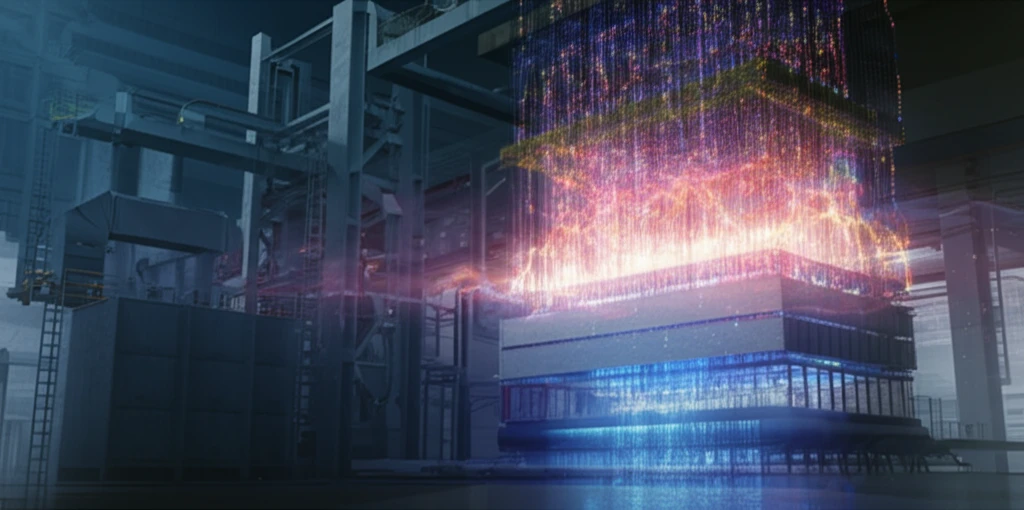
Unlocking Efficiency: How Particle Curtain Heat Exchangers Are Revolutionizing Thermal Management
"Explore the groundbreaking technology of particle curtain heat exchangers and how they're changing the game in energy efficiency and thermal regulation."
In an era where energy efficiency and sustainable solutions are paramount, the development of innovative heat exchange technologies is crucial. One such advancement is the particle curtain heat exchanger, a system based on the principle of rapid heat equilibrium between gas and solid phases. This technology is gaining traction due to its flexible system arrangement, excellent heat transfer performance, and the ability to adjust heating surfaces in real-time, offering a dynamic approach to thermal management.
Traditional heat exchangers often face limitations in adaptability and efficiency, particularly in industries with fluctuating heat loads or complex thermal requirements. The particle curtain heat exchanger addresses these challenges by utilizing a curtain of solid particles, typically silica sand, to facilitate heat transfer between gas streams. This method allows for a highly efficient exchange, capturing surplus heat and recycling it to preheat combustion air, maximizing energy utilization and reducing waste.
The core appeal of particle curtain heat exchangers lies in their ability to optimize energy use in a way that traditional systems cannot. By providing a dynamic and adjustable heat transfer mechanism, these exchangers are paving the way for more sustainable and efficient thermal processes across various industries. Understanding the intricacies of particle flow and system parameters is key to unlocking the full potential of this technology.
Optimizing Particle Flow for Peak Performance

The effectiveness of a particle curtain heat exchanger hinges on understanding and controlling the characteristics of particle flow within the system. Researchers have been diligently exploring how various factors influence this flow, including air velocity at the inlet, the initial thickness of the particle curtain, the diameter of the particles, and the mass flow rate of the particles. These parameters dictate how efficiently heat is transferred and how effectively the system operates overall.
- Inlet Air Velocity: Higher velocities can alter particle distribution.
- Initial Curtain Thickness: Affects particle density and interaction.
- Particle Diameter: Influences surface area and heat transfer rate.
- Mass Flow Rate: Dictates the quantity of heat transferred.
The Future of Thermal Exchange
The continued refinement and optimization of particle curtain heat exchangers promise a significant leap forward in energy efficiency and thermal management. As research progresses and our understanding of particle flow dynamics deepens, these systems will likely become a cornerstone of sustainable energy practices. These are expected to play a vital role in reducing energy consumption, waste, and improving environmental footprints for a greener, more sustainable future.
